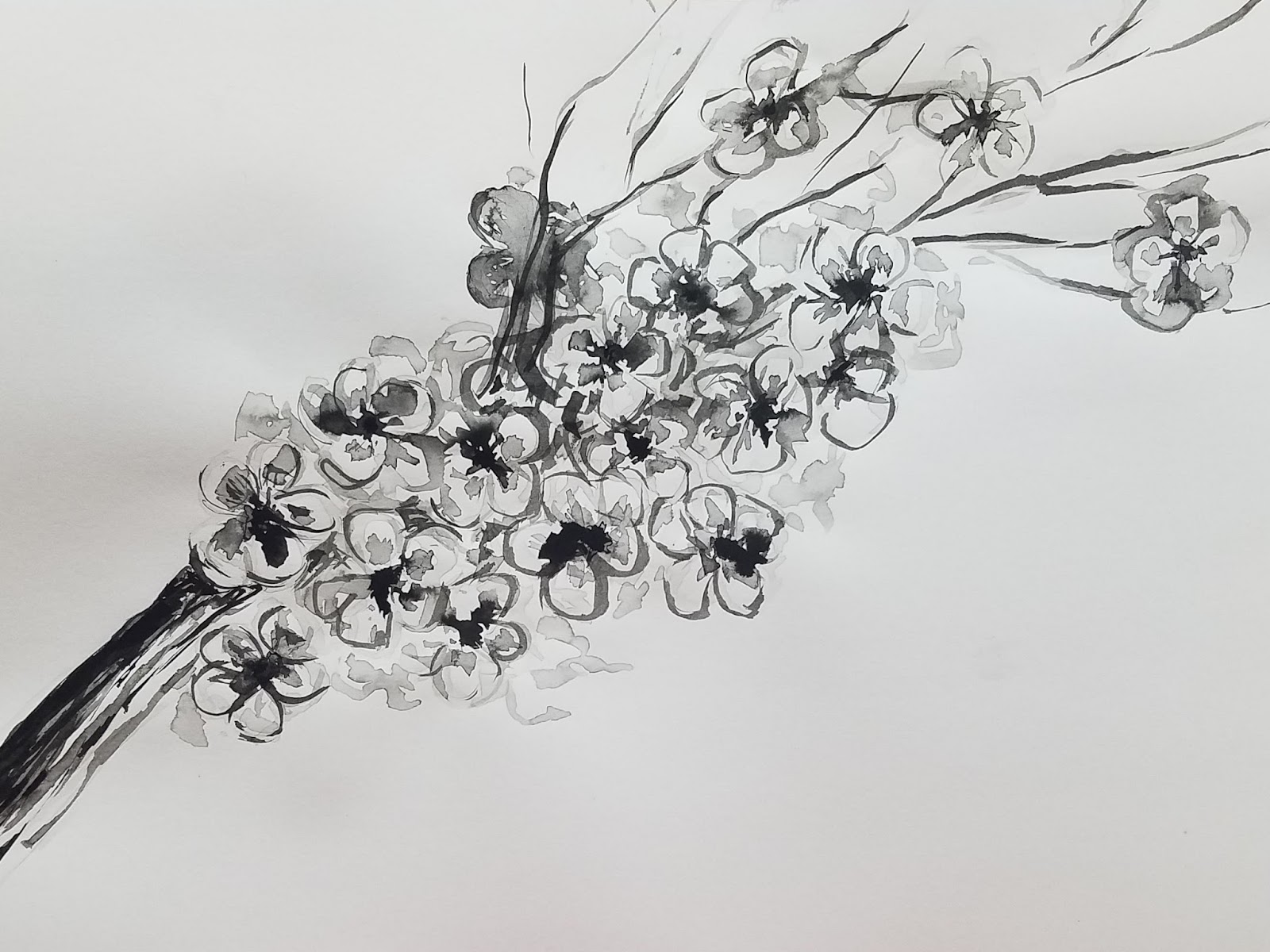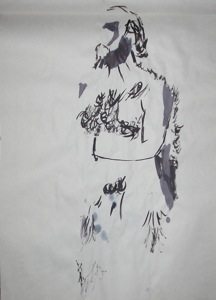

Let the canvas dry completely before moving on. Some places in the resist might still show a bit of ink, and some without the resist might have some ink lifted. Be careful not to remove too much of the ink, but know part of the charm of this technique is the ragged look it produces. Good to Know: Even though you use waterproof ink, it can still wash away from the canvas if you hold it under the sink too long.
#India ink drawing for acrylic painting pro
Pro Tip: To avoid disrupting the layer of gouache paint underneath, use a very soft paint brush to spread the ink.

Spread the ink across your canvas with a paint brush until the entire surface is covered. Pour the InkĬover your work surface underneath the canvas with plastic wrap. Wait until the gouache is completely dry before moving on. We opted for yellow and blue to take advantage of the staining properties in the gouache and get some color in our resist. Good to Know: You can use white gouache if you want to leave the canvas white when the gouache has been washed off. Paint the areas you want to remain ink-free - in this case, the ginko leaves - thick enough to prevent the ink from coming into contact with the canvas underneath. We’re making a painting of ginkgo leaves. Good to Know: This technique works better with simple designs, as it may not be precise enough for a very detailed painting. Plastic wrap (to protect your work space)īegin with a rough drawing in pencil on your canvas.Gouache paint in your desired colors (we used blue and yellow).
#India ink drawing for acrylic painting how to
Here’s how to incorporate it into your next masterpiece. The result: a takes-your-breath-away piece of art. It’s a lot like using masking fluid in a watercolor painting, but you can use different colors of gouache to create a stained resist that stands out from your inked background. It involves using a washable gouache on areas of your painting you want to keep light, before using another medium (such as India Ink) over the entire painting.

There’s one technique in particular that’s perfect for those who like drama in their painting: gouache resist. After all, painting with gouache can produce incredibly versatile results, depending on how much water you use and the tools you implement. Your drawings come to life through colouring with the intense colour ink.Īirbrush, feather, and line drawing techniques are achievable.Īll our paints are made in our factory in Wandre, Belgium.Gouache is a hybrid of watercolor and acrylic paint, and while it’s not as well-known as its fellow water-soluble paints, it’s definitely worth experimenting with. Without varnish, the paint will withstand water but may lose colour intensity over time due to exposure to UV light.Ĭlean your equipment with cold, soapy water. You can apply a Darwi matte, satin or gloss varnish to protect the achievement. When you paint the ink colour on it, the drawing will appear.Īfter a few minutes the paint is dry and provides a matte finish. You can prepare your paper beforehand with pastel or wax drawings. Use a soft brush to avoid brush streaks and watercolour paper that will keep the good quality of the colours and thus the final result, unlike printer papers. If you want to reduce the intensity of a colour, simply dilute it with a little water. Prepare the colours you will use and any mixtures of colours to create new shades.

The application can be made by brush, airbrush, pen to write or draw or drawing line. This gives an old look to Darwi or Cernit clay creations. The gold and silver colours are particularly appreciated for creating a patina on embossed creations (on Darwi cracking varnish or a painting created with a structural paste). Inks can be diluted with distilled water to reduce the colour intensity. They are all mixable together to create opaque pastel tones (with white) or new tones. The range consists of 4 opaque colours (white, gold, silver and black) and 10 transparent ones. INK liquid ink is made from water and shellac.


 0 kommentar(er)
0 kommentar(er)
